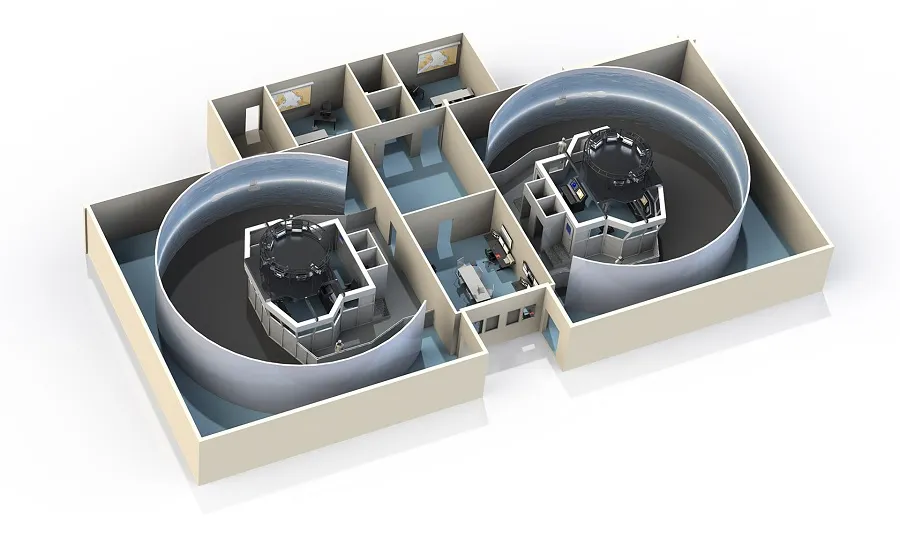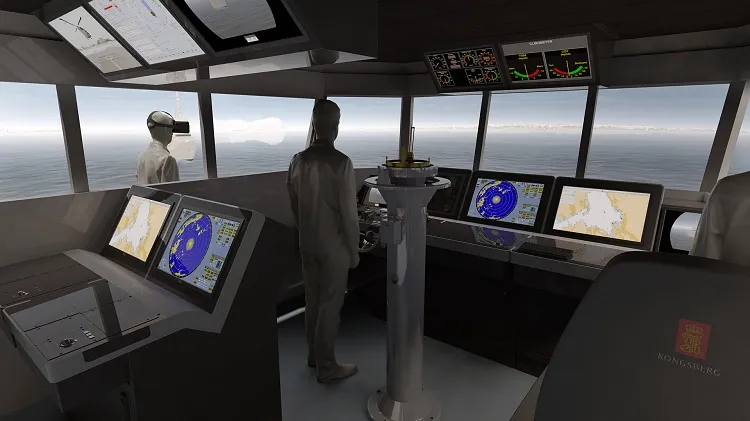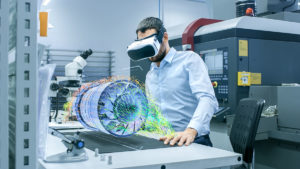The Royal Navy has announced this week that it is embracing virtual reality (VR) in order to train its sailors in cutting-edge new navigation simulators. According to the Navy, sailors will utilize VR headsets to take them into a naval metaverse, immersing them in key – and sometimes dangerous – maneuvers, all from the safety of a naval base.
The VR headsets will be just one facet of new state-of-the-art replica ship’s bridges, with software capable of recreating the entire fleet, harbors and waters around the globe, and challenging weather conditions by day and night. HMS Collingwood in Fareham, Britannia Royal Naval College in Dartmouth, and the home of the Submarine Service in Faslane will all receive the new trainers.
The services are being provided to the Royal Navy by Kongsberg Digital, a Norwegian software company that provides a range of advanced simulation systems for maritime education.
“A number of naval academies world-wide are today heavily using our simulator systems for education and training purposes,” said Andreas Jagtøyen, Executive Vice President of Digital Ocean, Kongsberg Digital. “The Royal Navy contract is a recognition of our technology and will further strengthen our position within the naval simulator training domain.”

The investment is part of the modernisation of Royal Navy training by ‘Project Selborne’ – a 12-year programme overseen by Capita to update and deliver a raft of training across many naval disciplines and branches.
The Navy stated that its existing simulators have trained thousands of navigators, officers of the watch and bridge teams for two decades. They’ve received regular updates and undergone enhancements to keep pace with seafaring and technological changes in that period – such as the Fleet’s switch from paper to digital charts to navigate the Seven Seas.
Now, with the introduction of the new VR training solutions, the Navy will see three full mission bridge simulators and two smaller ones installed at Collingwood, which will allow more sailors to be trained and earn more practical experience, rather than spending time in the classroom.

Lieutenant Commander Mark Raeburn, who lead’s the Royal Navy’s Navigation Training at Collingwood, said: “Nothing beats practical experience and our Fleet Navigators and Specialist Navigators will continue to be assessed at Sea on the Navigation Training Ship HMS Severn, but the new simulators should markedly increase the preparedness of the students.”
He added, “As the suite of simulation will also be increased at Dartmouth and Faslane this will allow cohesive training on the same software – before we have had to rely on disparate software systems with no commonality of training.”
Although initially the simulators will operate independently, in the future they will be able to link up, allowing students across the three sites to train together simultaneously, according to the Navy. The new bridge trainers will be able to recreate a variety of settings and scenarios, including single warships or auxiliaries sailing from one port to another, as well as complex task group maneuvers such as replenishment at sea – a challenging transfer of supplies between ships on the move (chiefly fuel, but also food, ammunition and general stores).
Through VR, students can learn in a safe environment without the potential dangers of the real thing, and the Navy can save on costs. Advanced engineering and hydrodynamic vessel modeling in the simulators ensure vessels, objects and equipment behave realistically, while the VR headsets provide an immersive training experience.
According to the Royal Navy, the first students are due to use the simulators in September.
Full article and pictures from here.








